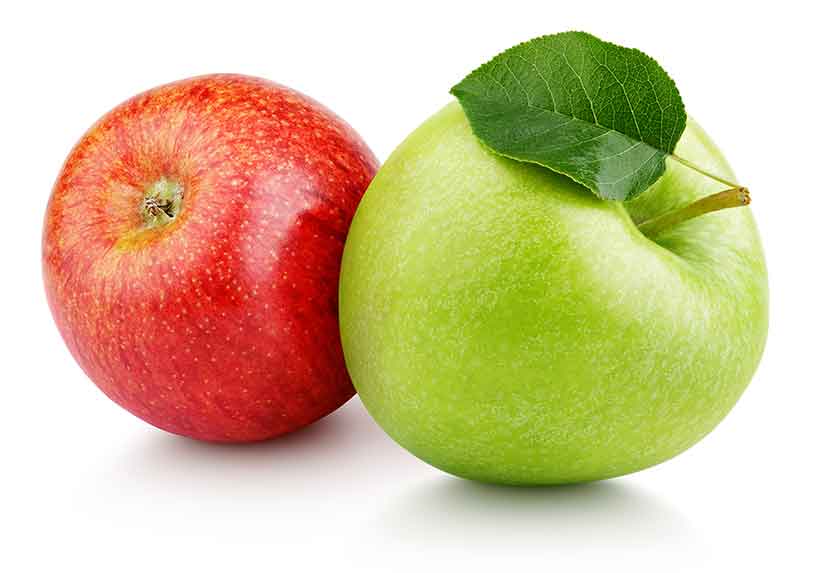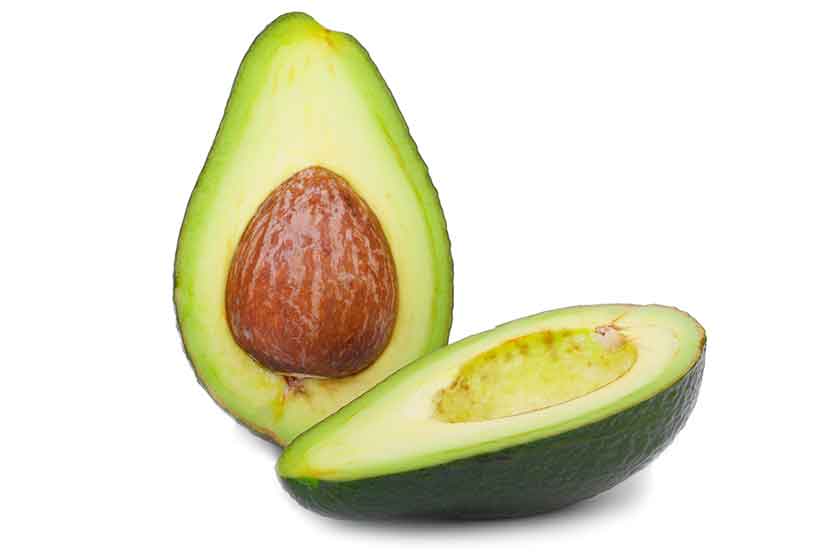1. Apple

Apples are a sweet fleshy fruit that grow around the world.
Believed to originate in Central Asia, there are now hundreds of varieties of apples, ranging from sweet to sour.
Nutritionally speaking, apples are a relatively high-carbohydrate fruit and their most significant nutrient is vitamin C.
They’re a very versatile fruit; while often eaten as a snack, they’re also used in a variety of dessert recipes.
Per large apple, the nutrient profile looks like this (1);
2. Apricot

Sharing some resemblances to a peach, apricots are a small fleshy fruit that contain a hard stone (technically a seed) in the middle.
The apricot is a popular fruit with a light orange color and it is best known for its vitamin A and C content.
Apricots also provide various types of polyphenols, such as catechins.
Interestingly, apricots require a cold winter to grow properly, so they generally grow in countries experiencing a true four seasons.
Here are the nutritional values per apricot (2);
3. Avocado

Avocados are an interesting fruit because they are very low in carbohydrate yet high in healthy fats.
The fruit originated in South America, possibly in Mexico or Peru, and it was first referred to in English by the name of “crocodile pear”.
One of the best things about the avocado is just how adaptable it is.
For instance, you may have heard of ‘avocado toast’, a trendy breakfast at the moment. However, there are many different ways to use avocados – such as making guacamole, avocado ice-cream, chocolate mousses, and many other interesting dishes.
Cold-pressed avocado oil also gives olive oil a run for its money in the ‘healthiest oil’ department; it’s a heat-stable fat that contains various protective nutrients.
Avocados are extremely nutrient-dense, and they are rich in fiber, protein, vitamins, and minerals – especially potassium.
Here is the nutrition breakdown per standard avocado (3);
4. Banana

The banana is a tropical fruit with a long body covered in a yellow skin.
It’s a very common fruit and—despite needing a hot climate—it’s available in most countries.
Since bananas have a very sweet taste, dessert recipes often use them.
In particular, banana splits, banana milk, and banana bread are some of the most popular options.
Due to their accessibility and inexpensive price, bananas are one of the most popular types of fruit in the world.
One medium banana has the following nutrient profile (4);
See here for a full guide to the nutritional benefits of ba









0 Komentar